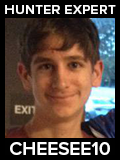
Welcome to the 232nd edition of the Data Reaper Report! This is the first report for Throne of the Tides.
Contributing to the Data Reaper project through Hearthstone Deck Tracker or Firestone allows us to perform our analyses and to issue the weekly reports, so we want to wholeheartedly thank our contributors. Without the community’s contributions, there would be no project. Contributing data is very easy, so if you enjoy our content and would like to make sure it remains consistent and free – Sign up!
Quick Links
Class/Archetype Distribution | Class Frequency | Matchup Winrates | vS Power Rankings | vS Meta Score | Class Analysis & Decklists | Meta Breaker of the Week | How to Contribute | Credits
Number of Games
| Overall | 535,000 |
| Top 1K Legend | 23,000 |
| Legend (Excluding Top 1k) | 12,000 |
| Diamond 4 to 1 | 60,000 |
| Diamond 10 to 5 | 93,000 |
| Platinum | 77,000 |
| Bronze/Silver/Gold | 270,000 |
Class/Archetype Distribution
[TABS_PRO id=57732]
Class Frequency
[TABS_PRO id=57733]
Class Frequency Discussion
Throne of the Tides has launched with a tide of masquerading Rogues, and it feels a bit like Alterac Valley once again. The class hovers around a 20% play rate throughout most of ladder, but peaks to about 30% at legend. Bomb Rogue incorporated Shattershambler and got some traction early on but has been declining since. Thief Rogue is a highly diverse cluster that we unfortunately couldn’t reliably separate into sub-categories. Vessel/Smite builds carry high overlap with the Stash/Tess builds that many players enjoy experimenting with. There are many builds that mix between the two, and nearly every possible combination of cards has been attempted. Games often end in blowouts without revealing what a certain opponent was piloting, and we don’t want to tag an opponent based on whether they Prepped a Vessel into Gone Fishin’ on turn 3. We’ll thoroughly discuss this archetype’s builds and what we’ve found to work best thanks to user-side data carrying complete information. There’s a lot to tell.
Warrior is the second most popular class in the format, with Control Warrior being the dominant archetype at higher levels of play while Quest Warrior is occupying a niche mostly at lower ranks. Control Warrior is very diverse with different approaches and a lot of development surrounding the new cards the class has received. We can spot three main build categories: Elemental, Kazakusan and Galvangar OTK (least popular).
Demon Hunter has been revived by the mini-set and is now looking to establish itself as the third most popular class at legend. Fel Demon Hunter has risen from the ashes of Drek’Thar, utilizing a new cheese package with Caria Felsoul and experimenting with new cards.
Priest is one of the classes that has changed the least, with Naga Priest looking like the ‘serious’ ladder choice and Boar Priest displaying its usual higher play rate at top legend. Quest Priest continues to fade as you climb up the ranks, though new cards did spark some new experiments there.
Holy Paladin is noticeable throughout ladder, some builds experimenting with Lightray and Myrmidon, but the deck is dwarfed by the presence of Control Warrior. Mech and Handbuff Paladin decline at legend, which is the usual behavior. We’re seeing little bits of Big Paladin running Front Lines but not much traction there.
Druid is the least popular class in the game up until legend, where the class spikes a bit in its play rate. Celestial Alignment Druid is specifically picked at top legend to farm Warriors and Boar Priests, but the class is mostly ignored elsewhere.
Burn Shaman popped up in the first day of the mini-set mostly to abuse a bug in Bioluminescence which gave +2 spell damage to every minion. Since the hotfix, the deck has declined into near non-existence. Some experiments can be found with Clownfish, both in a battlecry, control deck as well as a tribal, aggressive deck.
Not much is happening in Mage. Mech Mage occupies lower ranks and disappears higher on ladder, where you almost always meet a Naga Mage. Continued split between Ignite and Wildfire builds, with many starting to favor Ignite due to famed individual success in recent tournaments.
Hunter is mostly comprised of Big Beast. Quest Hunter still exists mostly at lower ranks but disappears at higher levels of play. Experimentation with new cards in this class is low.
Warlock is a popular class on ladder, but the higher you climb, the less of it you see. At top legend, it is the least common opponent you will face. Curse Warlock drastically declines, while Murloc Warlock disappears. Not a good look.
[TABS_PRO id=57734]

[TABS_PRO id=57735]
vS Meta Score
[TABS_PRO id=57736]
vS Power Rankings Discussion
Is there another meta tyrant brewing, or is there more than meets the eye?
- Warrior
- Control Warrior looks insane and what’s scary is that the deck is not even refined. Players are producing incredible results, including those at top legend, with builds that aren’t even optimal, yet the deck is so strong that no matter which final cards you include in the deck, it remains extremely dominant. There is a lot of room for error when you have such a powerful defensive package. Of course, we’ve figured out how to make Control Warrior even stronger, and there are two specific builds that look incredibly scary. The gap in power between Control Warrior and the second best deck is significant.
- However, there is room for the format to perform better against Warrior and there are answers to this deck at every level. Thief Rogue can do better in this matchup with specific card choices that are easy to identify, and it shouldn’t be as big of a pushover as it currently is. Naga Priest is a soft counter that doesn’t see as much play as it should. Mech and Handbuff Paladin can punish Warrior as well, though they drop off at higher levels. Boar Priest and Druid are the hardest counters, but don’t boast well-rounded matchup spreads and look unplayable outside of top legend.
- Rogue
- There is so much work to do with Thief Rogue. This archetype is a mess, so its overall win rate doesn’t tell us enough about its true strength against the field. We will note that the strongest build of the archetype hits close to the 52% win rate mark, making it a borderline Tier 1 deck. The matchup against Warrior can also be significantly better than is shown thanks to one specific card we’ll talk about later. There’s also another build that’s estimated to hit the 50% win rate mark while running Stash and Tess. Yes, finally these cards are featured in a deck that isn’t complete junk. To conclude, Thief Rogue is one of the strongest decks in the format post-refinement, but whether it will ever complete that refinement is a legitimate question.
- Bomb Rogue doesn’t seem that strong. The deck has major issues in the Control Warrior and Holy Paladin matchups that weigh on it. However, outside of these struggles, it looks balanced with a lot of close matchups. Initially, this deck seemed like hot garbage, but with a couple of small tweaks, it could stick around. It absolutely destroys passive decks that don’t have incredible sustain. There are big improvements in its matchup spread since our last podcast was recorded.
- Demon Hunter
- Demon Hunter is back, with Fel DH looking like one of the strongest decks in the format, second only to Control Warrior at legend and Tier 1 across all of ladder. Its matchup spread is also very well rounded, and what’s noticeable about the crucial unfavorables (Control Warrior, Holy Paladin, Big-Beast Hunter) is that they’re much improved by a Rustrot Viper.
- Priest
- Naga Priest is very underrated. We think the deck doesn’t see much play because players are scared off by the popularity of Thief Rogue, but the matchup isn’t as bad as it seems. Furthermore, Naga Priest does well against Control Warrior and is generally not a polarizing deck that has a good chance against most opponents. Burn Shamans, which were the toughest counters, are gone. If you want a well-rounded deck that gives Warrior problems, this is it.
- Boar Priest is a hard Warrior counter but has issues against other opponents. It’s the dream deck to queue into Control Warrior and Holy Paladin, but even in that kind of meta, Druid would soon follow and hard counter the Boar Priests. It’s difficult to find a niche where it can consistently excel on ladder. Mostly a tournament deck at its current state.
- Quest Priest… is not terrible when you build it well. Yes, we’ve found a potential build within the cluster of garbage that might be as good as Tier 3 when optimized.
- Paladin
- Holy Paladin sits in Control Warrior’s shadow. It’s very good but has issues finding justification to see play when the superior defensive powerhouse is just so much stronger and dominates it in the direct matchup. Things could move in a positive direction if Naga Priest starts seeing more play, as this is a matchup the Paladin deck excels at, but we doubt there will be a significant Warrior decline as a result. Some of the hardest Warrior counters tend to counter Paladin too.
- Mech Paladin is a strong Control Warrior counter. Initially, it seemed like Warrior had a decent grasp on the matchup, but the arms’ race in the Warrior mirror has quickly reversed any such movement. Handbuff Paladin is another decent Warrior counter, though a bit on the softer side. The obvious problem is that these decks’ skill ceiling is low, and they lose a lot of matchup percentages against multiple decks at higher levels of play where Control Warrior is most popular. We suspect they’ll remain very strong outside of legend but find themselves settled in Tier 2-3 status at top legend.
- Druid
- Druid seems to have only one competitive role, which is to serve as a hard counter to Control Warrior and Boar Priest through Celestial Alignment. There is absolutely no reason to play the class otherwise, which is a bit sad.
- Shaman
- Burn Shaman was a Tier 1 deck for one day, before a bug was fixed (it was still not as good as Control Warrior!). Now, it’s completely gone and its low sample following the hotfix suggests an unplayable status. Control Shaman isn’t looking good either, while Murloc Shaman is only decent at low MMR ladder.
- Mage
- Naga Mage is looking solid. The irony is that the Wildfire variant continues to perform better than Ignite despite all the recent hype about the latter, and this is true at all levels of play. Mech Mage falls off a cliff once we reach higher ranks. It has the second lowest skill ceiling in the format, after Quest Warrior. In a format with so many of these decks, that’s quite the accomplishment.
- Hunter
- Big-Beast Hunter is quite good outside of legend, and not so good at legend. Similar issue of a low skill ceiling, though not as drastic as other examples. Quest Hunter is toast. We’ve seen some experimentation with a Multicaster build. It looks atrocious. The Dragonbane Shot nerf killed the deck.
- Warlock
- Warlock is back to full dumpster tier. Curse Warlock is bad, even at rank brackets where it is quite popular. Murloc Warlock, much like Murloc Shaman, looks decent at low MMR and then falls off.
Class Analysis & Decklists
Demon Hunter | Druid | Hunter | Mage | Paladin | Priest | Rogue | Shaman | Warlock | Warrior
A lot of work has been done this week to clear up the absolute mess that is the Thief Rogue archetype following the mini-set. There are so many different builds and approaches, with so much overlap between them, that we had to carefully curate the best possible lists you can take to ladder. At the end of the process, we ended up with two builds that make the most sense.
The first is the classic, Vanilla variant with Azsharan Vessel, Filletfighter and Mr. Smite. This is the best performing build at all levels of play, and the one that also exhibits the most potential in the Warrior matchup (with a specific adjustment).
Contrary to the intuition that “value” through Stash and Tess should perform better against a removal-heavy strategy, it’s important to understand that Control Warrior isn’t overly passive, and the Rogue can be pressured out of the board if they give the Warrior any space to breathe. From the Depths is at the center of Warrior’s ability to scam an opponent that takes their time to assemble resources in preparation for an attrition battle.
One of the biggest developments in this variant is cutting Double Agent and Swashburglar for Shroud of Concealment. This increases the consistency with which you find your Wildpaw Gnolls and other impactful minions. Double Agent and Swashburglar have looked underwhelming over the last few weeks so it’s not an overly surprising move.
This leaves two more slots in the deck that should ideally be spells so they don’t interfere with Shroud and work well with Edwin. We can bring back the 2nd Shadowstep, but the 30th card is a bit of a mystery. Some players have opted for Vanessa or Okani, but neither card looks like a great fit. We finally identified ‘Yoink!’ as a potentially serviceable card in the deck. We would need more data on it, but it’s worth a try.
But this isn’t all for the variant. A very recent development has seen players move away from maximizing Shroud consistency, to maximize the Control Warrior matchup by adding Peasants in place of SI:7 Extortions. Peasant is a very strong turn 1 play for Thief Rogue, especially when going first, but Control Warrior specifically has no early game answer to it. It’s pretty much guaranteed to draw multiple cards in the matchup. If you’re facing a high number of Warriors, which is more likely at top legend (or elsewhere after this report), running Peasants and a Viper over Extortions and Yoink is a very sensible option that drastically alters the matchup. We suspect Rogue will begin to gravitate to this direction.
The second variant runs Contraband Stash and Tess Greymane. Yes, within the usual dumpster of the Tess/Stash cluster, we found a competitive list that can perform well at all levels of play. The key is not omitting the Rogue’s burst and reach through Vessel, Smite and Wicked Stabs. This deck’s game plan is to set up some sort of ‘scam’ play (Jackpot/Trickster, Prep/Vessel, Azshara/Colossal, Recon), snowball further with Stash/Tess and/or close out the game with burst when necessary.
Since we’re not running Shroud, the inclusion of Peasant over Extortion is not even a question. This is another list that performs admirably well against Warrior. It is worse than the Vanilla build but can fight for a place in the format.
Bomb Rogue gained a lot of traction in the early days of the patch but is currently in decline as it doesn’t seem capable of matching the performance of Thief Rogue’s strongest builds and suffers greatly in the Warrior matchup. If you do decide to play the deck, don’t bother with Edwin. The card isn’t relevant in most games. We suggest running Peasants based on how well they’re doing in Thief Rogue and how desperately this deck wants to improve against Warrior (and Paladin).
Control Warrior is bonkers. Throne of the Tides has given the archetype a further boost in its power, to the point it is taking over the format. Igneous Lavagorger is the perfect follow-up to From the Depths, while Tidal Revenant is an extremely powerful stabilizer that can also turn the Warrior into the aggressor.
The archetype is diverse in builds on ladder, and we can spot three main categories: Elemental, Kazakusan and Galvangar OTK. We’ve curated two builds that sit clearly above the rest, and one of them has a surprising twist.
The first is the new build that incorporates Lavagorger and Revenant. Its late game win condition is nothing fancy: just stabilize through removal and armor until you drop big bodies to deal big damage to the opponent. This deck relies on some off-board damage to close out games, and one strange omission in the most popular build is Galvangar. Why would Alextrasza be included and not Galvangar? The answer is that both should be in the deck, and we can already tell that Galvangar takes this list up another level.
This Elemental Control Warrior build is absurdly powerful and is currently the strongest list of 30 cards in the format. However, it suffers from a significant flaw: a bad matchup against the Kazakusan variant. The Kazakusan variant remains popular because of this, despite not looking as absurd against the rest of the field.
But what if you don’t have to choose? Yes, we’ve identified a way in which the Elementals can be incorporated into Kazakusan, to create a new hybrid list of Dragomentals. All we’re doing is cutting the big finishers of Galvangar and Alex, the situational Brawl as well as one Shield Slam. To make us more resistant to an opponent’s Mutanus, we can even add a second Amalgam and drop one Heavy Plate. That second Heavy Plate can alternatively make way for a Brawl, if we’re worried about Paladins and Druids.
The Dragonmental build is almost as powerful against the rest of the field as the Elemental build but is far better in the mirror. In fact, it beats the normal Kazakusan build in the mirror, essentially rendering it completely obsolete. The Galvangar OTK variant is weak in Warrior mirrors and is also weaker against the rest of the field, except for a few fringe matchups (Boar Priest, Naga Mage, Curse Warlock), so we struggle to see any justification to playing it on ladder.
With these two builds, Warrior is at the top of the format and expected to stay there.
Demon Hunter has surged into a great position in the format. The addition of Fossil Fanatic has added that extra bit of consistency to Fel Demon Hunter’s game plan, while a package of Caria Felsoul and Xhilag of the Abyss has added a layer of ‘Scamstone’ which was missing following the nerf to Drek’Thar.
While we do think Herald of Chaos would be a good card in a different format, we highly question its inclusion currently. It is horrendously useless against Warrior and doesn’t get enough value in other matchups. Viper seems to be a critical tech card for the deck now, making it the superior 3 mana 3/4. Card draw is also important against Warrior, which is why we keep Need for Greed. It’s not a great option, but it’s… needed. Okani is another decent tech option that can be slotted in to replace Viper.
Priest hasn’t seen a lot of internal changes with the mini-set. We recommend running the same builds of Naga Priest and Boar Priest as before. Those lists seem perfect in the current format and provide good answers to Control Warrior. Naga Priest is a soft counter. Boar Priest is a hard counter but suffers from major issues in other matchups.
But wait, could Quest Priest finally be competitive? The archetype is showing the greatest potential we’ve ever seen from it and might be able to crack the elusive Tier 3 with a refined build. Our attempt is featured below.
Holy Paladin looks like a very strong deck in the format but seems to be limited by the more successful defensive powerhouse of Control Warrior. This matchup has proven to be difficult, especially with Warrior’s new additions.
Nevertheless, the deck remains one of the strongest options you could play and performs better in some matchups compared to Warrior. Lightray has been a solid addition to the deck, but we’re less convinced by Myrmidon. We think Vitality Surge is likely the best 30th card in the deck, but we’ve listed some other options that can also work. Azshara is not one of them.
Both Mech and Handbuff Paladin provide strong matchups against Control Warrior, especially when it’s in the process of greeding up to win the mirror, with some builds cutting Brawl. There are no changes to these decks’ builds, as we’ve already refined them to perform optimally in the matchup before the mini-set released.
Druid is in a rough spot. The Celestial Alignment variant of Ramp Druid requires a very specific field to do remotely well in, usually at top legend where Control Warrior numbers are expected to be very high, but the class is greatly struggling elsewhere on ladder.
No massive changes in either Druid deck. Druid of the Reef takes priority over Kelpkeeper in the vanilla version. Battlemaster and 2nd Oracle are important against Warrior. Goldshire Gnoll is looking good in Celestial Alignment.
Burn Shaman has died with the hotfix to the Bioluminescence bug and nosedived straight into Tier 4. The deck is gone.
New builds of Control Shaman running a murloc package with Clownfish and Gorloc Ravager aren’t delivering good results, but there’s one direction within that archetype that looks a bit stronger and it involves Piranhas. Schooling is the MVP card in multiple key matchups, and we recommend testing Schooling together with Piranha Poachers. Those hungry fishes are excellent at helping you win early game board control, and can actually cause problems for Warrior since Rancor has been cut from the deck. Poacher is hard to remove on turn 3. You’re not favored into Warrior but you have a better chance.
Clownfish doesn’t seem to be enough to produce great results for Murloc Shaman, despite being the best card in the deck. The deck is certainly functional now, but like most tribal decks, suffers in its performance as you climb ladder and face stronger players. One thing we’ve noticed is that Wildpaw Caverns is very slow for the deck. You want two Bloodlusts for the Warrior matchup, and the original Finley is serviceable as well.
The obvious adjustment in Naga Mage to include a Viper over one of the other 3-drops seems very worthwhile in the current format. We’re currently leaning towards including Crushclaw Enforcers over Treasure Guards, but they’re interchangeable.
If you’re looking for a fresh and fun new deck that’s not very good but might be worthy of a Tier 3 placement, Big-Spell Amulet Mage looks serviceable at its low sample. This deck’s game plan is to ‘ramp’ to Barbaric Sorceress or Balinda Stonehearth with coins from Mailbox Dancers, and then blowing out the opponent with a discounted Rune or Amulet. You also run the Wildfire package without Wildfire, for further closing ability. Seems to work well enough against Warrior and Rogue (50-50’s) and dominates others (Mage, Paladin, Priest) but struggles against Demon Hunter.
Not a lot is happening in Hunter. Big-Beast Hunter seems to be the only viable archetype for the class. We added Barbed Nets to the deck, which seem to be strong with the Naga package. Faelin has been disappointing, and the second Saber isn’t so hot after all, especially without Faelin.
Warlock looks done at competitive play, once again. The new cards have done nothing to help move the class forward, which isn’t a surprise. The class’ existing mediocre decks have fallen further away from the rest of the pack. Murloc Warlock is okay at lower ranks of ladder, but there are still far better choices to pick up. Curse Warlock is nearly unplayable.
Control Warrior is looking like a devastatingly powerful deck, and it will be up to the rest of the field to adjust to this beast. There’s plenty of refinement work left in other archetypes and there’s no guarantee it will sustain this level of performance, but we’ll be surprised to see Control Warrior fall off.
After all, our analysis shows that Warrior has not reached its final form. If the featured two lists prove to be as strong as we estimate them to be, it’s going to be a tall task unseating Warrior from the #1 spot.
Preparing our weekly article requires a significant amount of time and effort from many individuals. We would like to wholeheartedly thank our current Patreons, whose generous donations help us fund computing and server costs.
vS Gold is our membership plan aimed to support our efforts towards improving our content and data analysis while receiving some bonuses and extra features.
Tier 3+ Patrons
Special thanks to Leo G, Aaron B, Jed M, Drew M, Alan J, Zolstar, Sean H, Steve F, Andrew N, Alonso P, James Y, Je-ho, Stephen H, William H, 1RiceBowl1, Alex S, PeejTreon, Josh G, Matthew H, Bruno B, Amir, Matthew P, amenbrotep, Karhu, Fisherington, Christopher N, Eric F, Eric L, BraveLittleStove, Lime, Kaushal, David, Joshua B, Jeff C, Pi, Reharl, Scott L, Jeff P, Mark P, Keith C, The Big Dawg, nburst, Alex S, Jess M, Peter, Lepton, Bob L, Gary W, Charlah R, Chocobo, Tim B, Chad K, Hayden S, Alex W, John Q, and Ashton F for supporting us this month.
Contributors
Here are all the people that participated in bringing you this edition of the vS Data Reaper Report:































